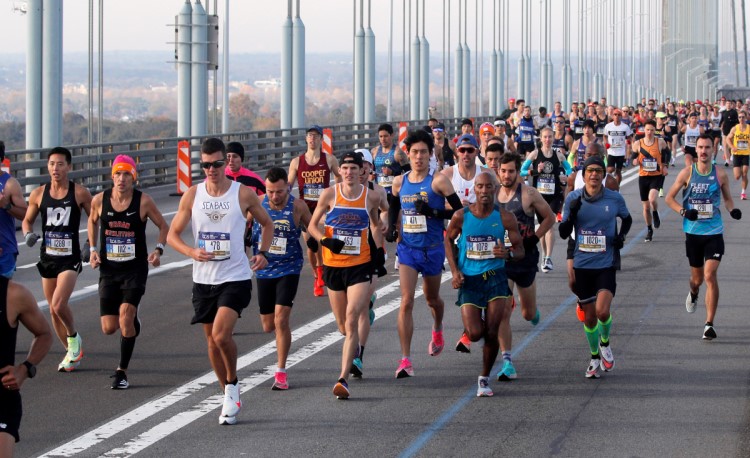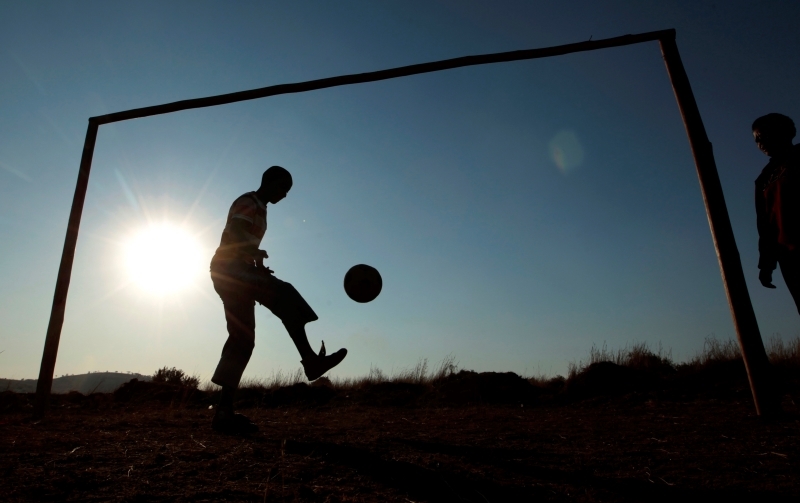Training intensity: is higher better, even for beginners?

One of the most fundamental principles of training is ‘adaptation’. That is, when you repeatedly subject your body to a physical demand, your body will adapt to that demand. Take endurance training for example. When you begin an exercise program such as running, cycling, swimming etc, you increase demands on the oxygen transport and utilization system, which produces a training stimulus on the muscles and cardiovascular (heart, lung, circulation) system. Over time, this repeated stimulus produces a ‘training adaptation’ (an increase in fitness that occurs as a result of a period of training) enabling you to consume and use oxygen at a faster rate, thereby increasing your pace.
Responders and non responders
Experienced endurance athletes with a good training background behind them will (hopefully) have developed a personally tailored training program with a mixture of intensities and durations to help develop the capacity to perform faster and over longer distances. But what about relative beginners who are feeling their way into endurance sport? Given the basic physiology outlined above, it’s natural to assume that if you take a group of novice athletes and place them on the same training program, the training adaptations will be broadly similar. It turns out however, that this is NOT actually true and that adaptations to a standardized training greatly differ between individuals.
Some people show only a minor or even no adaption to a training program – so-called ‘non-responders’ (gains of less than 5% over baseline measures). This was first demonstrated in large trial dubbed the ‘Heritage Study’ back in 2001, which found a wide range of responses in terms of maximum oxygen uptake (VO2max – a fundamental measure of aerobic fitness, especially in beginners) after a standardized training intervention(1). In the intervening years, the phenomenon of little or no training response when pursuing an endurance training program has been investigated by other researchers(2,3). For example, a study by US researchers published in the British Journal of Sports Medicine in 2019 compared eight previous endurance training studies(4). It found a range of training adaptions, ranging from gains of 118% to a decline of 33%!
More volume or intensity?
On the face of it, this huge variation in training responses when commencing an endurance program seems baffling. Why do they occur? One possible theory is most of these standardized endurance training interventions use steady state training at a moderate intensity (ie manageable for those without a comprehensive training background). It could be that for some of these people, the intensity threshold is simply not high enough to produce a large response. One option to overcome this could be to simply up the basic steady-state training pace. In theory, this should work (by imposing a larger, more intense training stimulus). However, there’s a big downside; a significant increase in pace, sustained across all workouts could place a lot of stress on the body, leaving athletes both exhausted and injury-prone.
“What’s the best way to ensure training adaptation ‘bang for buck’ when commencing an endurance program – higher volumes or higher intensity?”
Another theory is that the non-responders are simply not performing enough training volume. One option to get non-responders to adapt therefore would be to keep to the same pace but increase training volume - for example by running/swimming/rowing/cycling etc further and further in some or all workouts (ie the same intensity stimulus but much more of it). Again, this should work to an extent (this was the approach preferred by the New Zealand coach Lydiard) because high volumes of training can further improve the efficiency of the circulatory system (transporting blood and oxygen to your working muscles) and the efficiency of the muscles in using oxygen to produce energy, especially from fat.
The drawback however is that significantly higher volumes of training, even at low intensity, also increase injury risk. And while this approach is great for helping to develop the ability to run/swim/row/cycle etc for longer, it does little to help you perform these activities any faster, which after all is what most people want. The third drawback of course is time. Even the busiest people can squeeze in an hour’s worth of training here and there but two or three-hour workouts are another matter!
What does the research say?
What’s the best way to ensure training adaptation ‘bang for buck’ when commencing an endurance program – higher volumes or higher intensity? When we look at the research, it’s apparent that higher volumes of training do elicit more pronounced training adaptions(5,6). Equally however, there is also evidence that training protocols with higher intensities such as high-intensity interval training (HIIT) are more effective in producing increases in VO2max than moderate intensity training(7,8). This is a topic we’ve discussed at length in previous SPB articles – see here.
Another important point worth making is that when you delve into inter-subject variability in training responses, the main factor affecting this is the training dose/prescription rather than inter-individual differences in trainability(9). Put simply, it’s not the case that someone is inherently less trainable; rather it’s more about finding the training prescription that works best for them – good news for anyone following an endurance program where they appear to making very little gains!
You need to be logged in to continue reading.
Please register for limited access or take a 30-day risk-free trial of Sports Performance Bulletin to experience the full benefits of a subscription. TAKE A RISK-FREE TRIAL
TAKE A RISK-FREE TRIAL
Newsletter Sign Up
Testimonials
Dr. Alexandra Fandetti-Robin, Back & Body Chiropractic
Elspeth Cowell MSCh DpodM SRCh HCPC reg
William Hunter, Nuffield Health
Newsletter Sign Up
Coaches Testimonials
Dr. Alexandra Fandetti-Robin, Back & Body Chiropractic
Elspeth Cowell MSCh DpodM SRCh HCPC reg
William Hunter, Nuffield Health
Keep up with latest sports science research and apply it to maximize performance
Today you have the chance to join a group of athletes, and sports coaches/trainers who all have something special in common...
They use the latest research to improve performance for themselves and their clients - both athletes and sports teams - with help from global specialists in the fields of sports science, sports medicine and sports psychology.
They do this by reading Sports Performance Bulletin, an easy-to-digest but serious-minded journal dedicated to high performance sports. SPB offers a wealth of information and insight into the latest research, in an easily-accessible and understood format, along with a wealth of practical recommendations.
*includes 3 coaching manuals
Get Inspired
All the latest techniques and approaches
Sports Performance Bulletin helps dedicated endurance athletes improve their performance. Sense-checking the latest sports science research, and sourcing evidence and case studies to support findings, Sports Performance Bulletin turns proven insights into easily digestible practical advice. Supporting athletes, coaches and professionals who wish to ensure their guidance and programmes are kept right up to date and based on credible science.








